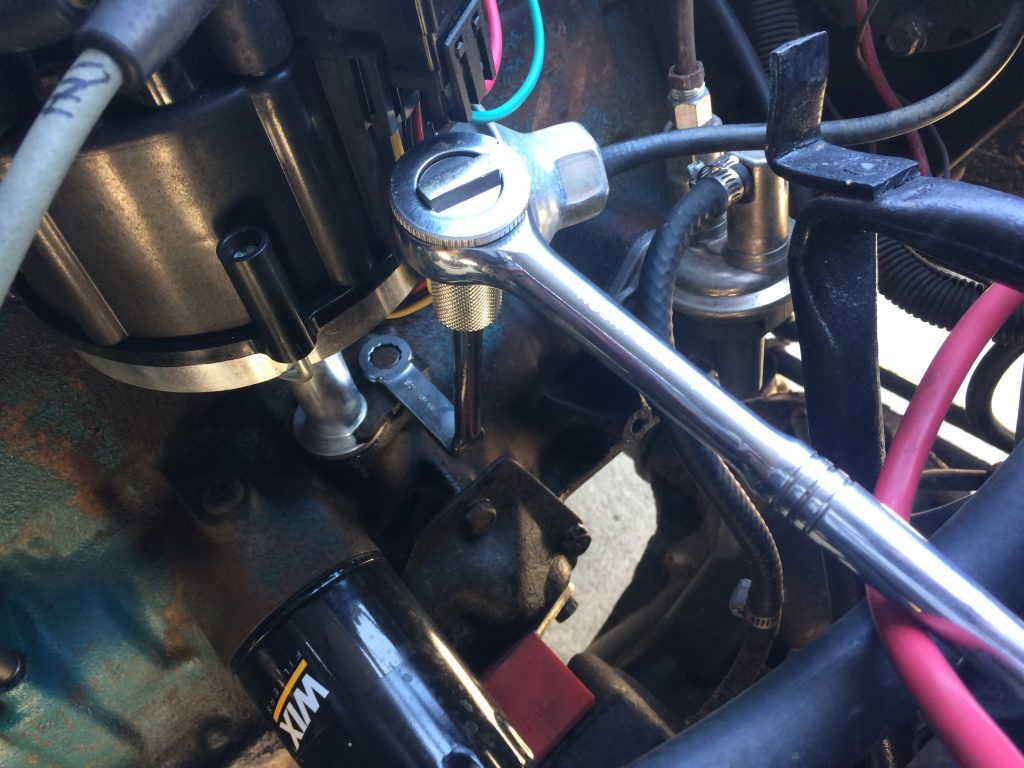
Even after it’s been properly installed and adjusted, a distributor can gradually slip over time. That means, if your older engine is still equipped with a distributor, you should really check your timing regularly.
And while installing a distributor and/or adjusting engine timing is a relatively easy and straightforward process, one step can be a little tricky:
Getting the dang distributor clamp loose.
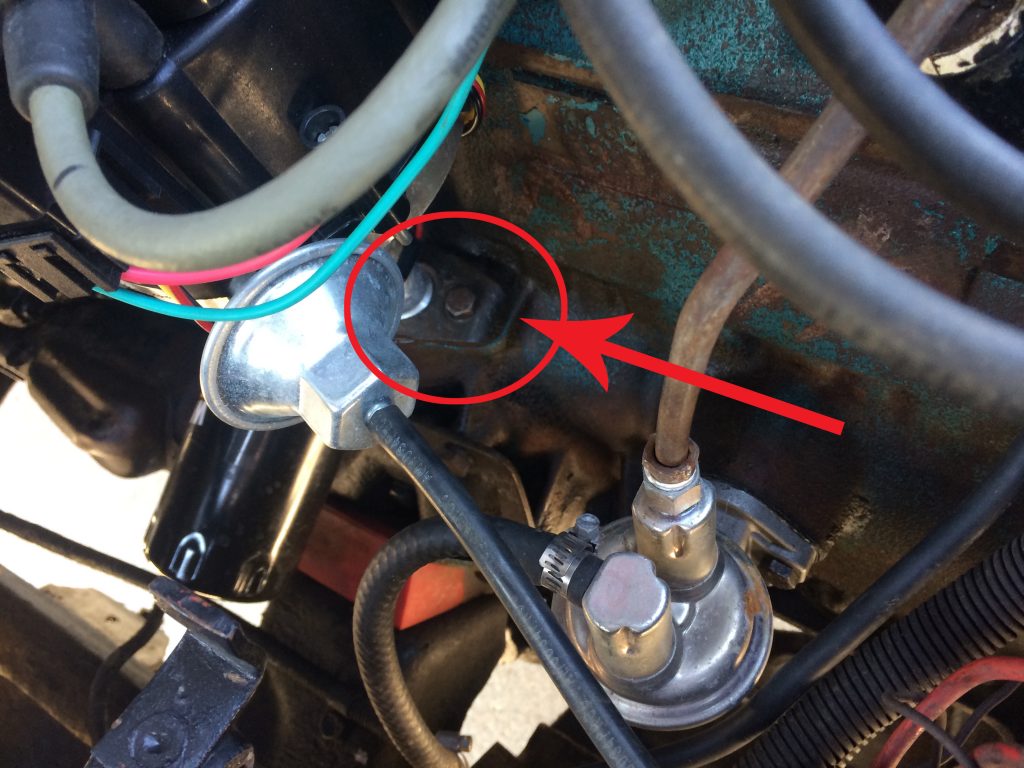
What is a Distributor Clamp Wrench & How Does It Work?
In a lot of common engine applications, the distributor is held in place by a clamp that is secured to the engine block via a single bolt. Though it’s an easy enough design, loosing and tightening that one bolt can prove tricky.
That’s because wrench access may be partially blocked by the engine’s valve covers, intake runners, firewall, wiper cowl, fuel lines, or some other obstruction. Worse yet, reaching the bolt can be downright impossible if you’ve got a large distributor body and a cramped engine bay.
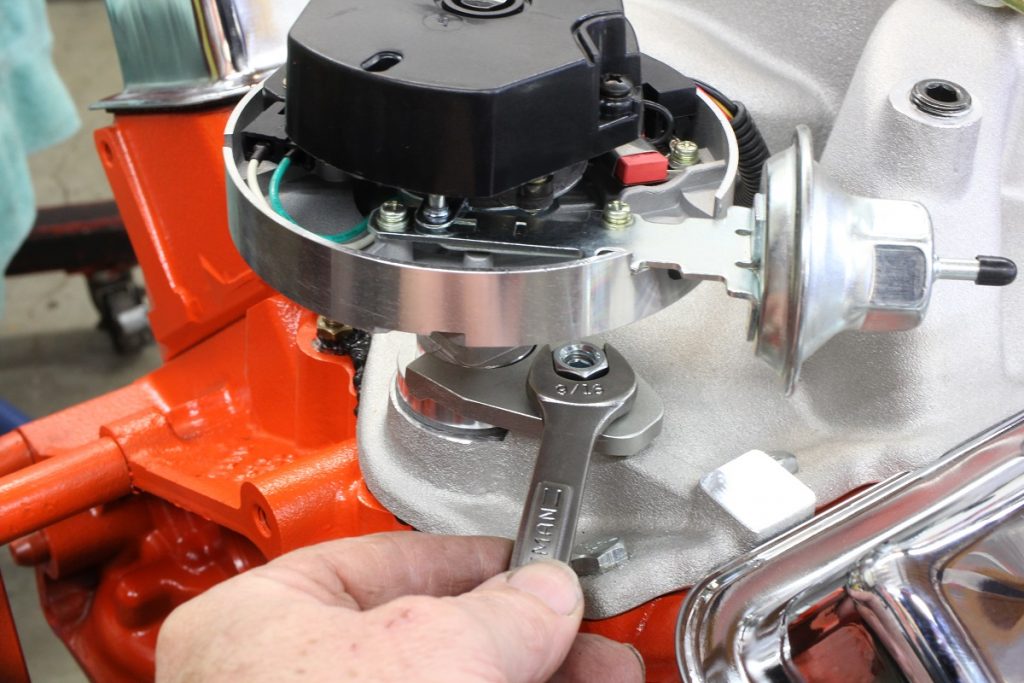
And it can be really frustrating in situations where you’re setting really, really precise ignition timing and need to make a bunch of small distributor adjustments, in which you may be tightening and untightening that bolt a lot as you dial the engine in.
That’s why some tool companies make specialized offset distributor wrenches that make it much easier for you to fit your wrench in, make those adjustments, and get out without rounding the bolt head or burning your wrist (remember, ignition adjustments are typically made with the engine running, which means it’ll get hot, fast).
The offset wrench design allows you to place the extension on the bolt head, while the ratchet handle sits elevated and away from the tight space between the engine and distributor.
How to Use a Distributor Clamp Wrench
While all engines are different, the process for loosing and tightening a distributor clamp (and/or setting ignition timing) is relatively the same for most common domestic applications. Our test subject in this demo is a 4.2L (258 c.i.d.) AMC inline six.
We chose the trusty AMC because its inline design gives us plenty of room to snap some pictures of the wrench on the distributor clamp nut. But as alluded to above, many gearheads don’t have the luxury of this much space—for some V8 engine applications, you may find yourself cramped under a windshield wiper cowl, squished up against a firewall, or alarmingly close to a (running!) radiator fan.
Again, all good reasons to really, really like an offset distributor clamp wrench.
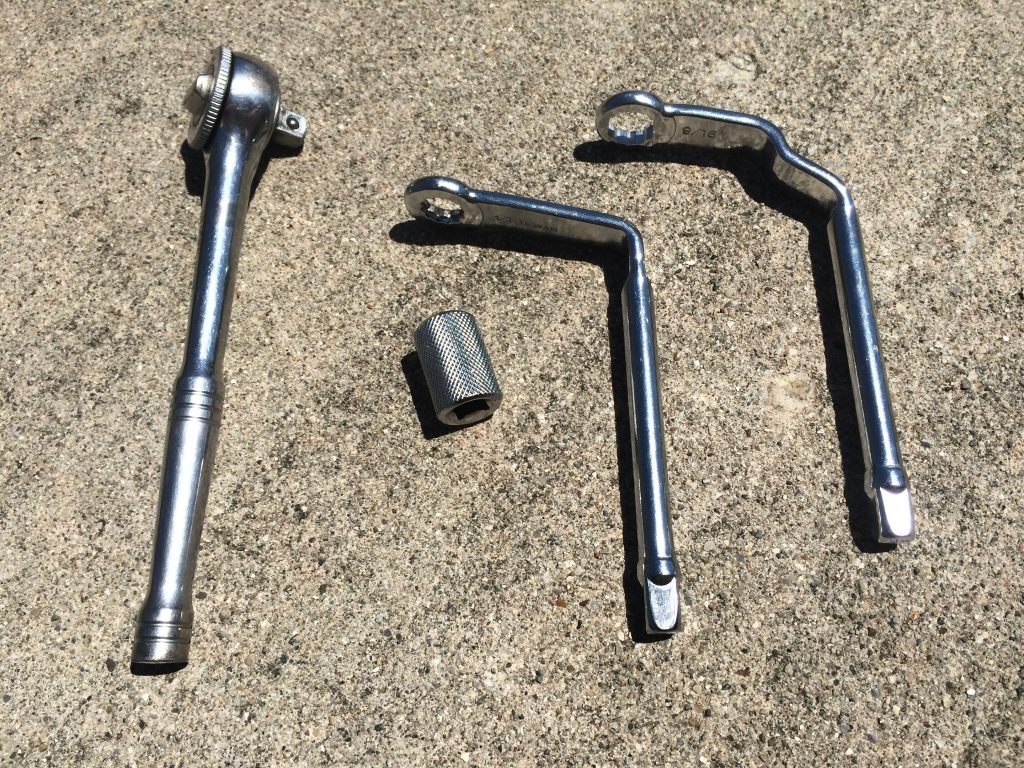
With an almost 90 degree bend, these wrenches boast a really basic design, but do the job nicely. SAE wrenches will typically come with 1/2-inch and 9/16-inch box ends, the two most common distributor clamp SAE bolt sizes. Metric wrenches are available too, usually with 13mm and 15mm box ends. And the ends will likely be 12-point, to give you plenty of maneuverability options around the bolt head.
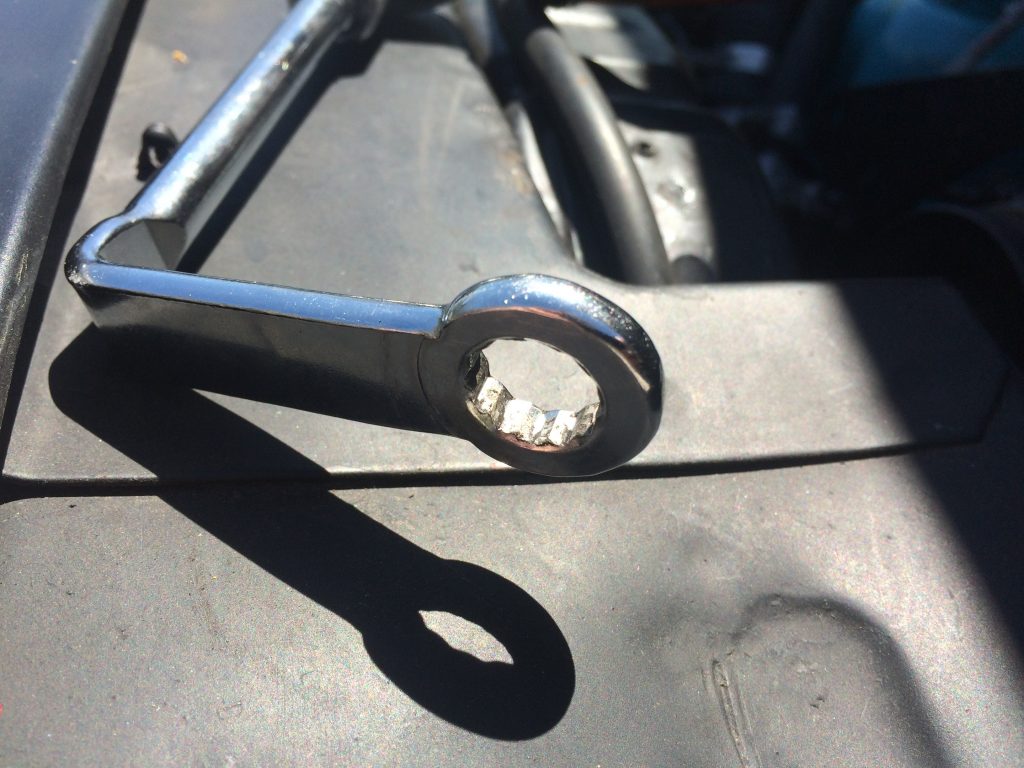
On the opposite side of the wrench is a male 3/8-inch drive. The wrenches also include a female coupler that you install on that male end, allowing you to attach your socket wrench. While the offset geometry can take a moment to get used to, you can now use your ratchet to tighten or loosen the bolt—free and clear, away from the engine and obstacles.
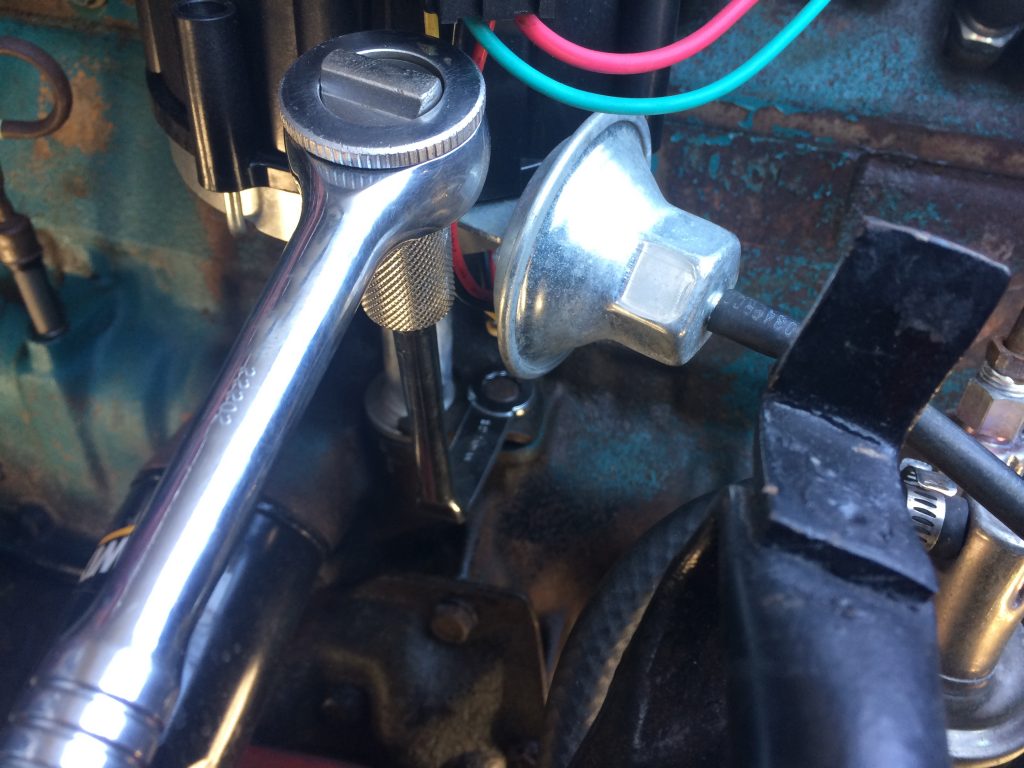
An offset distributor clamp wrench is a perfect example of one of those simple, basic tools that can solve a big problem. So, if you’ve been burning your fingers, scraping your valve covers, or rounding distributor clamp bolt heads, it may be worth a few bucks to toss a set of these Unsung Hero Tools in your toolbox and save yourself some hassle.

I do think the worst was the A.M.C. V-8s(304-401) and the newer Slant 6 Chryslers. In my day I had 5 or 6 Distributor wrenches. Oh,let’s not forget the Air Cooled V.W.s